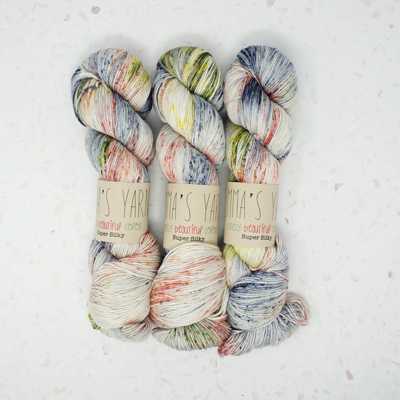Good Suggestions On Selecting Bamboo Clothing
Wiki Article
Why Are Yak Merino Wool Base Layers So Effective For Winter Sport Clothing In Terms Of Natural Fiber Benefits And Environmental Sustainability?
The natural fibers and the environmental sustainability of Yak Merino Wool Base Layers make the perfect option for winter sports clothes.
Merino and Yak are both natural fibers that come from animals. These are renewable resources that can be harvested sustainably, without harming animals. These fibers are biodegradable, which means they are able to are broken down naturally and without causing environmental harm.
Low environmental impact
Natural fibers are known to have less environmental impact than synthetics. The process of harvesting and cultivating wool requires less chemicals and less non-renewable substances when compared to synthetic fibers.
Energy Efficiency
Processing wool fibers consumes less energy compared to the synthetic fibers, such as nylon or polyester. The energy used during the process of manufacturing natural wool is generally lower, resulting in less carbon emissions.
Reduced Microplastics Pollution
Natural wool fibers are not in charge of microplastic pollution in water bodies in contrast to synthetic fibers which shed microplastics when washed.
Product's long-term durability and its Recyclability
The clothes made of yak merino are generally durable and last for a long period of time. Wool fibers are also able to be recycled and reused. This decreases consumption and also the environmental impact.
Sustainable Practices
Wool producers and manufactures adhere to sustainable, ethical practices. These include animal welfare, land management responsible and fair treatment for workers in the chain of production.
Environmental Certification-
Insuring consumers about the sustainable production of wool is a certification such as the Responsible Textile Standard (GOTS), or the Global Organic Textile Standard.
In general, base layers made of yak are low-impact on the environment. They are made from renewable resources and adhere to the highest standards of sustainability and ethical conduct throughout their supply chain. This is because natural fibers are sustainable. Follow the top rated merino wool base layers for blog advice including merino base layer, wool thermals womens, smartwool long sleeve shirt, ski underwear, patagonia merino wool base layer, merino wool base layer pant, skiing mid layers, spyder baselayer, wool mid layer, merino wool thermals and more.

What Are Some Advantages That Bamboo Clothing Offers In Terms Of Comfortability, Sustainability And Safety When Used For Outdoor Winter Clothes?
Bamboo clothing comes with many benefits in terms of durability and comfort for winter outdoor clothing.
Softness Bamboo fabric's smooth texture and softness makes it gentle for the skin. It is often compared for the luxuriousness of cashmere and silk.
Bamboo fibers are wicking in moisture that help to remove moisture and keeps users dry and comfortable when they engage in physical activity.
Thermal Regulation- Bamboo clothing has natural temperature-regulating properties, providing warmth in winter while remaining breathable to prevent overheating.
Sustainability-
Bamboo is a plant which can be used to grow rapidly and with little pesticides. Bamboo is able to regenerate quickly and is therefore a good choice for sustainable clothing.
Low environmental impact - Bamboo farming typically uses less water than conventional cotton farming and does not reduce soil nutrients. Bamboo absorbs and releases CO2 more than other plants.
Protection for Outdoor Wear-
UV Protection Bamboo fabric due to its inherent UV-resistant properties, offers a natural protection against harmful UV-rays.
Bamboo is a natural antimicrobial agent called "bambookun" that blocks the expansion and growth of odor-causing bacteria. Bamboo keeps clothes fresher, particularly in outdoor activities.
Other Benefits-
Durability - Bamboo fibers possess an extremely durable quality, which makes them suitable for outdoor apparel that will endure harsh usage.
Biodegradability - Bamboo clothing can be biodegradable, meaning it can break down in its own way after the completion of their life cycle. This helps reduce environmental impact.
When used in outdoor winter clothing, bamboo fabric offers the benefits of thermal control, comfort, moisture management, and sustainability. This makes it a desirable choice for those who are looking for sustainable and high-performance clothing. Take a look at the top bamboo clothings recommendations for site examples including yala pajamas, bamboo boxer shorts for men, bamboo pants for women, bamboo clothing, bamboo athletic wear, bamboo sports clothing, bamboo cay shirts christmas, bamboo baby clothes, bamboo undergarments, bamboo maternity wear and more.

What Is The Texture, Warmth And Absorption Of Bamboo And Merino Compare To That Of Wool?
In comparing merino wool, bamboo clothing, and traditional wool, we can compare them in terms of texture, warmth and moisture absorption- Texture-
Merino Wool Merino Wool, sometimes referred to as fine-fibered Wool, is known for it's softer texture and smoother fibers. It is generally considered to be more gentle on the skin.
Bamboo Clothing Bamboo clothing is smooth and silky. It's often compared to high-end materials like cashmere or silk. It has a smooth and soft texture, providing a comfortable wearing experience.
Traditional Wool- The feel can vary. Certain types of wool may feel coarser or cause itching or irritation compared with bamboo clothing and merino.
Warmth-
Merino Wool- Merino wool provides excellent warmth because of its insulation properties. It's an excellent insulator in cold weather and retains warmth even when it is damp.
Bamboo Clothing offers warmth, but it doesn't provide as much insulation as wool. The bamboo regulates body temperatures effectively and is comfortable in all conditions.
Traditional Wool- Similar to wool from merino traditional wool is warm and insulation. It can feel more bulky and heavier than merino wool or bamboo clothing.
Moisture Absorption-
Merino Wool Merino Wool is a natural fiber with amazing moisture-wicking properties. It draws moisture from the skin and then allows it to evaporate. It stays warm even if wet.
Bamboo clothing - Bamboo fabrics may also absorb moisture, providing comfort for exercise. It regulates the moisture and keeps the wearer dry.
Wool isn't as water-wicking as bamboo or the merino. When wet, certain kinds of wool may feel damp and heavy.
Summary: Merino Wool is known for its soft, warm and has exceptional water-wicking properties. Bamboo clothing has a smooth and silky texture. It is warm and well-regulated by moisture. Wool clothing has many textures, and offer warmth and moisture absorbency However, it may be more coarse or heavy than bamboo or merino clothes. Each type of material has distinct properties that cater to different preferences and requirements in clothing. Read the top bamboo winter clothings for site examples including icebreaker baselayer, wool long johns women's, wool undershirt women's, merino long underwear, ski base layer mens, wool long johns women's, best layers for skiing, smartwool merino 250 base layer, smartwool merino 250 base layer, sweaty betty base layers and more.
